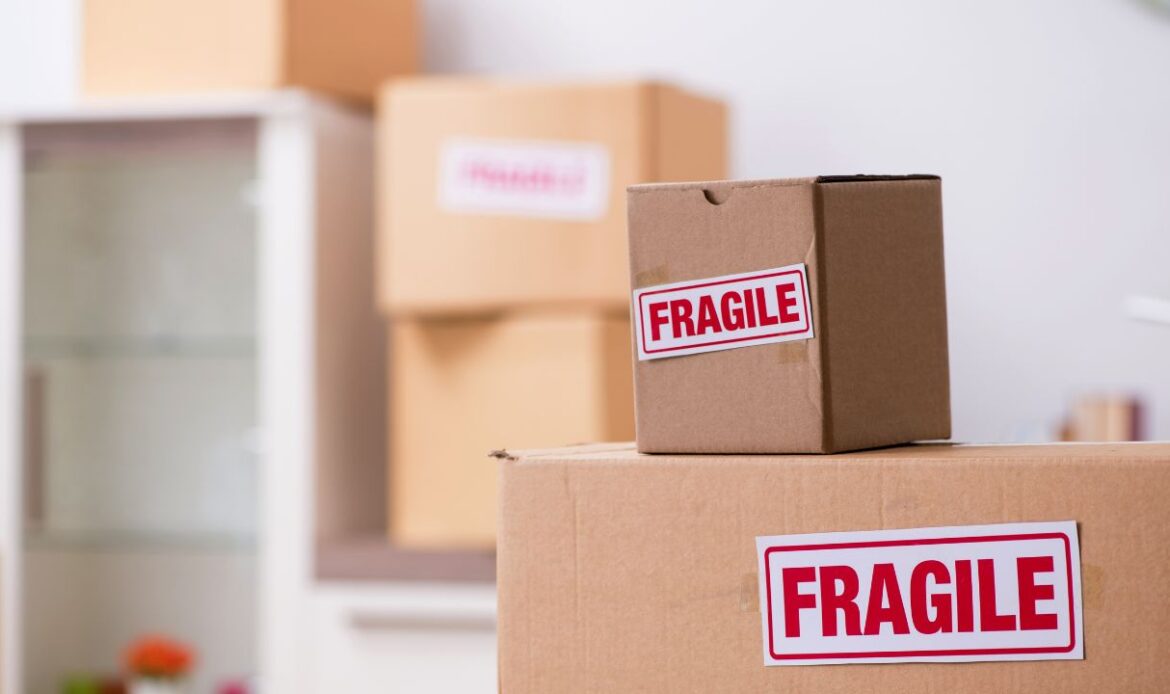
Shipping fragile items can be a daunting task, especially when you’re doing it internationally. The last thing anyone wants is for their fragile items to arrive damaged or broken. Whether you’re shipping glassware, electronics, or antiques, ensuring your items arrive safely requires careful packing. This guide provides key tips on how to ship fragile items internationally and keep them in perfect condition.
1. Understand the Shipping Requirements for Fragile Items
Before packing your fragile items, it’s important to know the specific shipping requirements for delicate goods. Each shipping company has its own guidelines and restrictions for fragile items. Research these policies to ensure your items are within allowable shipping standards.
For international shipping, fragile items often require special handling, which can affect both the cost and the delivery time. International shipping regulations may vary by country, so it’s essential to check the destination country’s customs regulations as well.
2. Choose the Right Packaging Materials
When shipping fragile items, the packaging is key to ensuring their safety. Using the right materials can make all the difference. Here are some essential packing materials:
- Bubble Wrap: Bubble wrap is a must-have for protecting fragile items. It provides a cushioning layer that absorbs shocks and prevents the items from shifting during transit. Wrap each fragile item individually with bubble wrap to offer maximum protection.
- Packing Peanuts: Fill the empty spaces in the box with packing peanuts to prevent items from shifting. This ensures that the fragile items are cushioned on all sides.
- Foam Sheets and Pads: Foam sheets provide an extra layer of protection around delicate items. They’re great for wrapping fragile surfaces or to provide additional padding in boxes.
- Double Box: For high-value or particularly fragile items, using a double box technique is a great idea. Place your item in a small box with plenty of padding, then put that box inside a larger one with extra cushioning. This helps absorb any shock if the package is dropped or mishandled.
3. Secure the Fragile Items Properly in the Box
Once you’ve selected the right materials, it’s time to pack your fragile items securely. Follow these steps for packing:
- Line the Bottom of the Box: Start by placing a layer of packing peanuts or bubble wrap at the bottom of the box. This will provide a cushion for the fragile items.
- Wrap Each Item Individually: As mentioned earlier, bubble wrap is your best friend here. Wrap each item thoroughly and secure it with tape. If you’re shipping multiple items, try to separate them as much as possible to avoid contact during transit.
- Place Items in the Box: Carefully place the wrapped fragile items into the box, making sure there is no empty space between them. If there are gaps, fill them with packing peanuts, crumpled newspaper, or foam pads to prevent movement.
- Top Cushioning: After placing the items in the box, add another layer of padding at the top of the box. This will protect the items in case of any impact from above.
- Seal the Box: Once everything is securely packed, use high-quality packing tape to seal the box. Make sure to reinforce the edges and seams to prevent any accidental openings.
4. Label Your Box Clearly
Proper labeling is critical when shipping fragile items, especially internationally. Use a large, clear “Fragile” label on all sides of the box. Additionally, you can write “This Side Up” to indicate the proper orientation. This way, handlers are more likely to treat your box with care.
Include all necessary shipping information, such as the destination address, your return address, and any customs declarations. The customs declaration is particularly important for international shipments as it will help avoid unnecessary delays.
5. Choose the Right Shipping Method for Fragile Items
When you’re shipping fragile items internationally, it’s important to choose the right shipping method. Different shipping methods offer varying levels of service and speed. Here are a few options to consider:
- Express Shipping: If time is of the essence, opt for express shipping. While more expensive, it often offers faster delivery and more careful handling.
- Standard Shipping: If cost is a bigger concern than time, standard shipping may be sufficient for less fragile items. However, for very delicate items, express shipping may be your best bet.
- Air Freight: Air freight is generally faster and safer than sea freight, which can be especially useful for fragile items. If you’re shipping fragile electronics, this is the preferred option.
- Shipping Insurance: No matter how careful you are, accidents can happen. It’s highly recommended to insure your fragile items when shipping internationally. This protects you if your items get damaged during transit.
6. Minimize the Impact of External Factors
Although you can’t control everything, you can reduce the impact of factors like temperature, humidity, and pressure on fragile items. If your items are sensitive to temperature changes, consider using thermal packaging to keep them stable.
For items sensitive to humidity or pressure, use packaging materials like desiccants or moisture-absorbing packets for protection.
7. Shipping Costs and Delivery Times
Shipping fragile items internationally often comes with a higher price tag. The shipping cost is influenced by the size, weight, and value of your items, as well as the distance they’re being shipped. Express shipping, especially with air freight, will cost more, but it’s often the best option for fragile items that need extra care.
If you’re concerned about shipping costs, some companies offer discounts for bulk shipments or regular customers. It’s worth inquiring about any available deals before finalizing your shipment.
Additionally, factor in the delivery time. International shipping can take anywhere from a few days to several weeks, depending on the destination and shipping method. For fragile items, it’s essential to allow enough time for safe handling and delivery.
8. Track Your Shipment and Stay Informed
Once your fragile items are on their way, it’s important to track the shipment to ensure it’s progressing smoothly. Most international shipping companies provide tracking services, allowing you to monitor your package from the moment it’s sent until it arrives at its destination.
Tracking your shipment helps you stay informed about any potential delays or issues. If there’s a problem with the shipment, you can address it quickly and minimize any risk of damage to your fragile items.
9. Consider Hiring a Professional Shipping Service
If you’re shipping high-value or delicate items, it’s a good idea to hire a professional shipping service. A reliable company has the expertise to handle, package, and deliver fragile items safely, reducing the risk of damage.
Professional services have the right tools to pack and ship fragile items, ensuring your items are safely handled from start to finish.
Conclusion
Shipping fragile items internationally requires thoughtful preparation, careful packaging, and choosing the right shipping method. By using the proper materials like bubble wrap, filling empty spaces, and double-boxing, you can reduce the risk of damage. Additionally, selecting the right shipping method and insuring your items can offer added peace of mind.
If you need help shipping your fragile items internationally or need advice on handling delicate items, reach out to Universal Relocations. Their team can guide you through the process and ensure your items arrive safely.

 800-13-7356
800-13-7356
